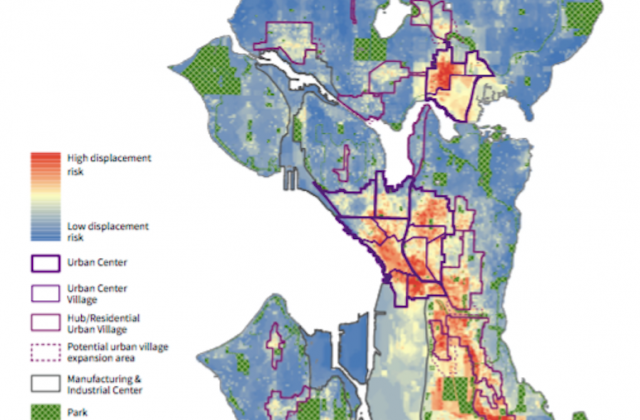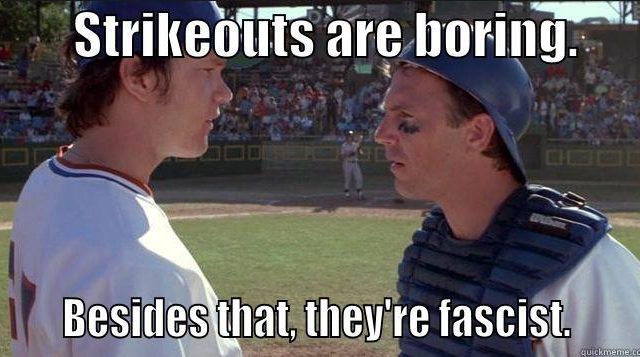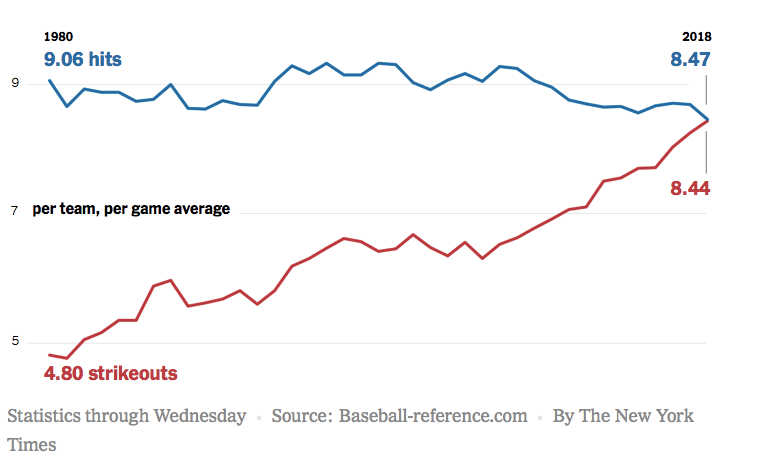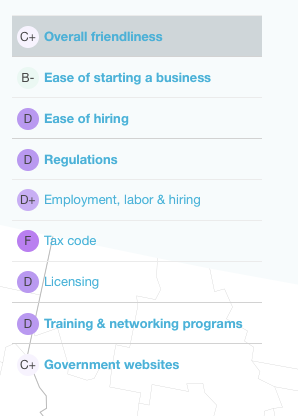We Have a Leadership Crisis not a Housing Crisis: The Parable of the Broken Gas Gauge
Over the last holiday I had a loaner car, and I was driving down a narrow road toward my destination. The car was old, but was well maintained, I thought, by the garage that gave it to me while mine was getting maintenance. Suddenly, it started to make noise and lurch a bit. What was going on? And I was on a two lane road with no shoulders. Great! What a perfect way to start the weekend.
Finally, the car came to a halt. It had electrical power, but it wouldn’t start. A long line of cars was building up behind me. What a mess. I called AAA and started the process of getting a tow. While I was doing that a Washington Department of Transportation (WSDOT) vehicle came up behind me. The woman who was driving it came to my window.
“What’s wrong with it?” she asked.
“I’m not sure. It won’t start,” I answered.
“I’m going to push you out of the way,” she said.
Fortunately, there was a turn out less than a mile away where I could wait for a tow. When she finished getting me there she came back to the window.
“It’s almost like you ran out of gas,” she said.
Then it hit me. The garage had told me that they had just fixed a problem with the gas gauge. Could it be that they had failed to repair the problem? The gauge was reading about half full when everything stopped.
“Do you have some fuel you can give me?” I asked.
She did, and she poured gasoline from a can she had into the tank. After a few gasps, the car started up and I was on my way down the road. When I got to a gas station, and I filled up, I had put about 16 gallons in the tank. It definitely had run out of gas.
When you don’t have the right measures you can’t make good decisions. My gas gauge had lulled me into a sense of security. I believed the measure on my dashboard even though I had driven a fair number of miles. Why would I worry about how much gas I had?
The right measure for housing issues is price; price is the critical gauge for cities to decide whether they have enough housing to accommodate the people who want to live there. If prices keep climbing, it means it’s time to take the foot off the brake. Maybe existing rules were ok when demand was low, but when price goes up it’s a clear sign that everything must be done to increase production. But if one ignores the gauges or pays attention to the wrong ones, it can lead false correlation and trouble.
When we use affordability, a qualitative measure, we get focused on feelings. We panic. Rents are “skyrocketing” and people feel like things are out of control. The city is growing too fast. Things are changing and getting too expensive. The feelings of the changing city get falsely correlated with price. The more things change, the higher the prices go. Using affordability, a description of a person’s relationship to price, is like looking at the oil light to determine how much fuel is in the tank.
While this makes sense on a superficial level – looking out the window there is lots of construction – it is the wrong gauge. More housing will reduce scarcity and help lower prices. And poor get hurt most when we don’t get out of the way of housing production; they need more housing and many just need cash to help pay the rent where they are, not a few units years from now.
Seattle is driving down the road with a working gauge and it reads empty. The warning light is on. The light has been on for miles now. For some reason the leadership of the City thinks that driving faster will mean getting to the destination faster and so more speed – or rules and taxes and regulations – is the way to “solve” the problem. Meanwhile, they keep passing off ramp after off ramp. The next one coming up says, “No Gas Next 150 Miles.”
Who’s On First? $180 Million from Mariners Won’t Buy Much Housing
After a nice trip out to Mazama I told myself I wouldn’t whine about how we do things around here. That didn’t last. Clearly the King County Council learned nothing from the jobs tax debacle in Seattle. Now the King County Council is creating a huge controversy about renovations to Safeco Field. I’m not even going to get into that. Go ahead and raid the repair fund. But what does $180 get you? Not very much a long time from now. Policy makers need to ask, “What do we get for this money?” This is an email I sent to King County Auditor John Wilson and the County Council.
Greetings,
It’s been awhile.
You know the drill.
Here’s a blurb from a recent article on the Mariners issue in which you are mentioned:
The idea of giving the Mariners such a big chunk of money has been met with outrage. Some want the $180 million to be spent on building affordable housing to alleviate the region’s ongoing homelessness crisis. There are about 12,000 people living homeless in King County, and the county’s own auditor has said that a lack of affordable housing is a major impediment to solving the crisis.
The problem with that is at the going rate for many projects — like Building 9 at Magnuson and Capitol Hill Arts — is about $500,000 a unit. You can see a decade of cost information at our website.
For $180 million, King County could help 25,000 people paying $300 more than 30 percent of their monthly income on housing, where they currently live, for two years. Check my math. We’ve already set up a calculator to help people see how much they’d qualify for at http://helpmewithrent.com. Imagine that many households not having to worry about rent next month, or the next, or the one after that.
that to the extent that there are cost differentials, we could give examples of why it might be more expensive and that those things should be changed (ie government regulations)
Term Limits: The Displacement Debate Should Be Over
These days the debate about housing is characterized by how repetitive it has become; the debate seems to always cover the same ground and reach the same conclusion. For some the conclusion is we need more rules to keep prices in check and for others the conclusion is that we need fewer for more housing. The discussion, though, is plagued by poorly defined terms and a paucity of data. The notion of displacement and gentrification are the best examples. Joe Cortright gets to the right answer is a recent post at City Observatory.
On a visceral, political level, it does seem to be fair to suggest that if rich neighborhoods are able to block new housing, then poor neighborhoods ought to have the same prerogative. But that’s a road that leads nowhere: Empowering everyone to be NIMBYs in the hope that blocking new development will cause the demand for housing to go away or be absorbed somewhere else is a recipe for worsening housing affordability and greater displacement.
That’s great. But what is displacement and gentrification anyway and how do we measure it? This is the question that nobody can or will answer. I took a look at what some have called a “Black Exodus”from Seattle and found that the city is actually becoming less white and while some neighborhoods have seen a drop in black population, other neighborhoods have seen an increase matching that drop. People move. Why? There isn’t anyway to tell, but the idea that Seattle is becoming a whiter city is false. Overlaying data about language, income levels, and other factors to calculate “displacement risk” isn’t a measure of displacement (see the map above). Seattle’s measures are a weird, progressive form of red lining that deems some places risky and then makes it harder to build housing there.
Are there people who see their rent go up and then have to move from their neighborhood? Of course that happens. But without having a way to determine how often it does we have no way to know if policies being implemented are stopping that. And how do we stop it? If housing is abundant then rents stabilize and even drop over time. This can be measured, and we know that when inventory opens up, prices and rents level off. Cortright and the many other people who have said the same thing are correct. But the best way to win the debate about displacement is to not have it all.
Baseball and Housing: Hitting, Pitching, and Supply Have a Simple Fix
I’ve long compared the hunger to regulate the housing market down to the color of doorknobs on the bathroom doors of new apartments with people’s view of something seemingly completely unrelated: baseball. As is often the case, my intuition — and just ambient awareness — is right. People like to see the outcomes they want whether it is in the built environment, politics, and even sports. And that doesn’t even mean just one’s favorite team winning games it also comes down to nuances like the pace of the game. A little while back the New York Times ran an article, More Strikeouts Than Hits? Welcome to Baseball’s Latest Crisis; sound familiar. I’m not trivializing housing here nor people’s serious interest in the sport, just making a point about human nature, averages, and keeping everything in perspective.
Just like housing, where people obsess about average quarter over quarter changes in prices, sports fans obsess about averages too.
The “crisis” in baseball is that the game is slowing down. The game is becoming a game of chess between power hitters and power pitchers. Pitch after pitch is thrown. We look at our phones. Take selfies. Eat hot dogs. Oh, a hit! A home run? Now it’s 1 to 0. It starts to feel like <face palm> soccer. This is America after all. We want action. Baseball remains the iconic American sport,
And yet attendance is down, and more and more balls are being kept out of play. Some longtime observers consider the shifting landscape — hitters swinging for the fences, pitchers throwing everything with maximum effort, fielders standing in unusual spots — and wonder what has happened to their game.
This reminds me of the argument in housing that builders are only producing “luxury apartments.” My response is always, “there are no luxury apartments, only scarce ones.” Except in Manhattan, wealthy people rarely live in apartments. When prices go up, it isn’t because new apartments have gold fixtures, it is because demand is outpacing supply. People complain that the housing market is like shopping in a grocery store that sells only caviar or peanut butter. Why? Because it’s all about the profits.
The Times story shows that, as in housing, fans see a conspiracy of wheeling in dealing owners being more worried about winning games and the certainty of strikeouts and home runs as ruining the game. Somehow everything is rigged to benefit a certain outcome. And like people complaining about how Seattle is losing its “laid back charm” because of growth, baseball fans complain and “wonder what has happened to their game.” And like in housing they complain to the people in charge.
“You can’t change the way the competitive people that run clubs are thinking about the game because they think they’ve figured out the way to win more games,” [Baseball Commissioner Rob] Manfred said. “The only option available to us is to have dialogue with the people that play the game every day and figure out what rules, if any, ought to be put in place to kind of check, or manage, these organic developments that are ongoing.”
Sounds like a Seattle City Councilmember. Time to change the rules to deliver the outcome the people in the stands are demanding. Remember this is sports we’re talking about, not people’s economic well being.
What does all this say about human beings? Well, people want outcomes, in almost every arena, literal or figurative, to respond to their whims. If the game of baseball slows down because pitchers and hitters are better at their jobs — pitching and hitting — that’s, as the character in Bull Durham said, “fascism.” It isn’t. Changes in the statistical outcomes are real, but they are reflective of human beings in a system following the incentives in the system. Maybe it makes sense to change some things like the height of the pitchers mound, something that has been in contention for over a hundred years.
In 1893, to create more offense, the box was replaced with a raised mound and a rubber slab 12 inches long and relocated further back to 60 1/2 feet from home plate. Pitches were required to be touching with their back foot and the rubber plate was 60 1/2 feet away from home plate.
The extra five feet was significant, as it cut down on the angle of the pitches and the league batting average spiked up 35 pts. in 1893 and another 29 pts. in 1894.
Rules do matter and every game and market needs them not to control home runs and strikeouts but to create some predictability. People can’t play a game or live and work in a market unless there are some consistent rules. Data also matter. When strikeouts or housing prices go up it’s worth having the debate. But the housing debate is battling not over the height of the mound, but over every single pitch and every single hit. And the answer to rising prices is simple: more housing of all kinds in all parts of the city for people of all levels of income. It’s simple and not ideological or political at all; a lot like changing the pitchers mound.
The View From Up Here: State Ignores Big Questions About the Housing Trust Fund
The reason I posted the 5 part series on land use and housing week before last was because I felt like the conversation we’ve been having about housing has become needlessly confounded with a whole bunch of ideology and efforts to use people’s frustration about housing prices to gather political power and advantage. I also did it because I felt like my voice at that time was still optimistic, almost eloquent about the ways in which welcoming more people to the city is important on many levels. I was encouraged by that tone.
That didn’t last long. After a refreshing trip out to the Olympic Peninsula I returned to find that same old stuff going on in the housing world. Not that I expected it to change. I thought maybe I would change. Maybe I’d finally find some sort of inner peace and acceptance about the completely incoherent and harmful way all levels of government are dealing with housing issues. Then I opened up an email from the Washington State Commerce Department announcing meetings over the next couple months of the Affordable Housing Advisory Board (AHAB), including of something called the “Needs Assessment Committee.” The AHAB Committee is the public face of the Housing Trust Fund which I’ve been calling to be reformed.
The email just set me off. What in the world is the “Needs Assessment Committee?” Nobody I talked to had ever heard of it, and it made me think of the serious need to fix a number of problems. I started writing Commerce staff person Corina Grigoras with that question, and half an hour later I had written the email I am sharing below which I sent to as many people as I could think would care. I have not received a response. In the past, I’ve cast myself as Laocooon or Cassandra, a lofty comparison that I guess I find consoling. Instead, perhaps I’ll try to think of myself as the Statler and Waldorf of housing, ignored but at least having a sense of humor about the mess down below. Enjoy!
Hello Corina,
- Disparities in funding between rural and urban counties (Grays Harbor County got zero dollars over the last decade? Kititas with the lowest vacancy rate in the state got zero?);
- The conflicted nature of the members of the Affordable Housing Advisory Board (I think we need legislation to change to composition);
- The lack of resources going toward ownership programs in the state;
- Ideas and policies that would reduce the costs of production for non-profit housing funded by HTF;
- Lack of worker housing for both agricultural workers and aquacultural workers in the state (these sectors are our biggest economic engines, still);
- Communities of color don’t seem to be getting as many opportunities for funding their projects. Why and how do we fix that?; and
- Ideas for reforming the way Housing Trust Funds are allocated (this is a highly insider driven and politicized process. It isn’t fair).









